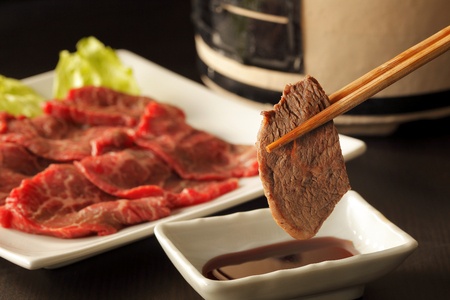
Smoking barbecues sizzling with skewered beef, chicken nuggets, sardines wrapped in foil and baps fill the summer air with smoky, mouth-watering smells. Not a scene just in the US or UK where backyards are populated with guys and gals sunning themselves but a scene also of Japanese plots. Yakiniku is Japanese word meaning ‘grilled meat’ and it has become something of an art form in the land of the Rising Sun.
We learn from the encyclopedia that the term Yakiniku was reserved for western ‘barbecue’ food. It was a term that became familiar when the writer Kanagaki Robun (仮名垣魯文) described western cooking methods in the book Seiyo Ryoritsu of 1872. This was the time of the Meiji period but it later became a term associated with Korean cuisine. To be honest, this type of cuisine actually draws on Korean cuisine such as bulgogi.
Tokyo is a haven for carnivores and Yakiniku can be found in at least 500 restaurants throughout the capital. Ever since beef import restrictions, this meat has not looked back.
Why should it become so popular ? The main basis is the halo effect of Japanese food which is often perceived as clean, thought through and of course possessing eastern exoticism. It also hints at a cleaner flavour with plenty of sauces like soy and the like on offer. There has been a general trend towards presentation of meat in a more attractive light given that so much focus falls on vegetarianism and veganism. This type of cuisine also demonstrates the gutsy side of Japanese cooking because it complements their other styles such as tofu in mouth-puckering broths and Yakitori skewered chicken.
Leave a Reply